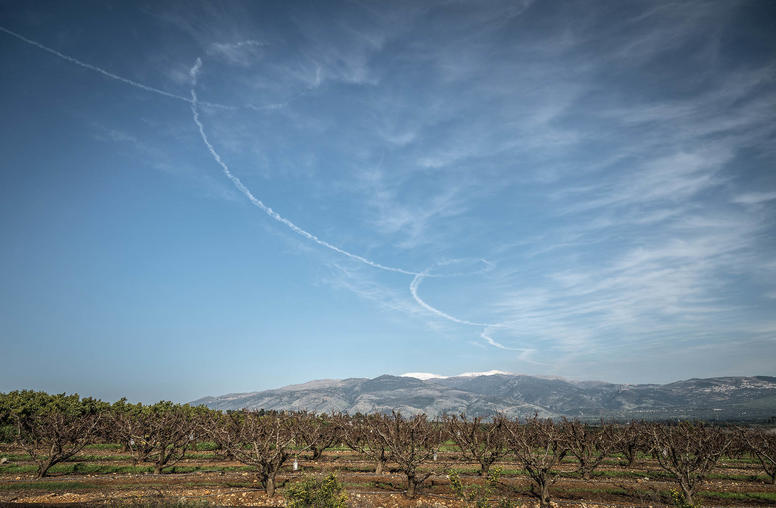Event at USIP Looks at New Media in the Syria Crisis
The U.S. Institute of Peace (USIP), along with George Washington University, hosted an event on October 2 examining the role of new media in the ongoing Syrian crisis. “Groundtruth: New Media, Technology and the Syrian Crisis” featured activists using social media in their efforts to end Bashar al-Assad’s regime, as well as mainstream journalists reporting on the crisis and policy analysts.

The U.S. Institute of Peace (USIP), along with George Washington University, hosted an event on October 2examining the role of new media in the ongoing Syrian crisis. “Groundtruth: New Media, Technology and the Syrian Crisis” featured activists using social media in their efforts to end Bashar al-Assad’s regime, as well as mainstream journalists reporting on the crisis and policy analysts.
Ambassador Alberto Fernandez, coordinator of the U.S. State Department’s Center for Strategic Counterterrorism Communications, told an audience at USIP and those watching the live webcast that amid the “flood of information” out of Syria, U.S. officials “try to triangulate where the truth is.” Fernandez said that less attention is paid to verifying the authenticity of particular reports from new media and elsewhere and more on how that text and video collectively creates a general picture of the Syrian uprising: “It reveals the nature of a struggle that rings true….It’s this messy reality that is very well captured in the virtual world.”
Fernandez also said that new media communications in Syria conveyed “a lot of extreme sectarianism”—including that manipulated by the regime—but added that many Syrians are “fighting every day to combat” it.
The October 2 event was part of the Blogs & Bullets Initiative of USIP’s Center of Innovation for Science, Technology and Peacebuilding. Launched three years ago, Blogs & Bullets aims “to try and make sense of this brave new world of online discourse; to better understand how social networks, bloggers and user-generated content are being used in conflict,” said Sheldon Himelfarb, director of both the Science, Technology and Peacebuilding Center and the Center for Media and Peacebuilding at USIP. “And more importantly, how they can be harnessed for peacebuilding.” Rami Nakhla, formerly with the USIP-facilitated project known as “The Day After” that brought together Syrian oppositionists to develop strategies for managing a post-Assad regime transition, connected the role of social media with the overall uprising, calling it “an overwhelming truth revolution.” Nakhla, who is now director of the Istanbul-based, USIP-sponsored Syria Transition Support Network, described considerable opposition efforts to verify and document accounts of violence and other events in the uprising to establish their veracity. Those accounts have been a key source of stories for mainstream media.
The central role that new media is playing in the Syrian uprising was explored by Marc Lynch, director of the Institute for Middle East Studies at George Washington University. “Syria may be the most social-mediated conflict in history,” he said. Lynch drew attention to the “intense battle over the credibility of these sources” in video and news postings from Syria. Even as questions about the source and accuracy of some reports linger, he said, the opposition’s local coordinating committees “have gone to great effort” to verify the information before public release. Rafif Jouejati, director of the Free Syria Foundation, described new media in Syria as helping “people who have been repressed for 50 years [find] their voices for the first time.” Jouejati emphasized that accuracy in opposition reporting was important to maintain their standing to hold the Assad regime accountable for its violence.
National Public Radio correspondent Deborah Amos, who has covered the Syrian crisis from the beginning, said that some sources actively engaged in opposition new media had proven useful for gathering information and for developing narratives that can be conveyed to listeners. “We came to trust certain people,” she said. At the same time, rebel military gains have enabled her to gain access to the scenes of military action, such as a downed Syrian Air Force plane, rather than having to rely on videos off the web.
New media also proved useful in the preparation of “The Day After” report, released in late August. Steven Heydemann, USIP’s senior adviser for Middle East initiatives, said organizers could speak with rebel Free Syrian Army commanders in Syria via Skype about what will be an important transition issue—security sector reform.
USIP’s Blogs and Bullets Initiative has published two studies: “New Media in Contentious Politics” and “New Media and Conflict after the Arab Spring.” Himelfarb said the analyses employ a five-level framework: how social media are affecting the action of individuals; helping civil society mobilize for collective action; influencing inter-group relations; prompting reactions and use by regimes in conflict; and engaging international audiences.
The overall initiative, said Himelfarb, aims to illuminate the role of social media in conflicts, moving beyond what had been “an unproductive debate between the so-called cyberoptimists and cyberskeptics—those who were very bullish on the power of the Internet and social media to transform societies and those who were not.”



